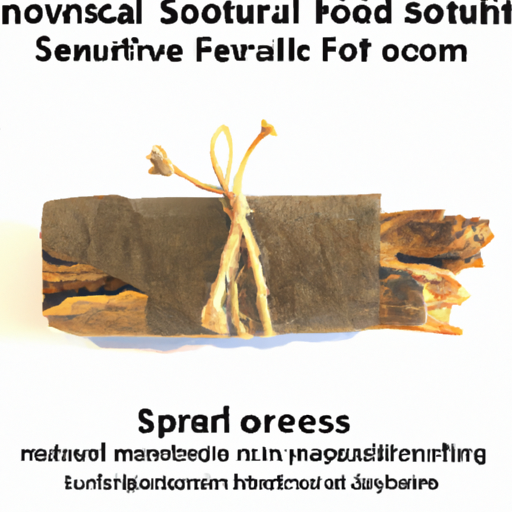Hello! In this article, we’ll be discussing 7 essential survival food tips that will come in handy during challenging times. We’ll cover recipe ideas for foods that are great for survival, as well as tips on how to effectively store these foods to ensure their longevity. Whether you’re preparing for a disaster or simply want to be more self-sufficient, these tips will provide you with valuable information on how to ensure you and your loved ones have access to nourishing meals when it matters most. Let’s get started!
7 Essential Survival Food Tips
When it comes to preparing for an emergency situation, one of the most important aspects is ensuring that you have an adequate food supply. Choosing the right survival foods, stockpiling and storing them correctly, and knowing how to prepare them are all crucial factors in ensuring you and your loved ones are well-prepared. In this article, we will provide you with 7 essential survival food tips to help you navigate this important aspect of emergency preparation.

Consider Nutritional Value
When selecting survival foods, it’s important to prioritize nutritional value. Look for foods that are high in essential vitamins, minerals, and protein. Canned meats, such as tuna and chicken, are excellent sources of protein while dried fruits and nuts can provide necessary vitamins and minerals. Additionally, consider including sources of complex carbohydrates like oats or whole wheat bread. A well-rounded diet will help to sustain you during challenging situations.
Long Shelf Life Foods
Opt for foods with long shelf lives to ensure they remain edible for extended periods. Canned goods, dried beans and legumes, rice, pasta, and dehydrated foods are all excellent options. These foods often have expiration dates several years into the future, making them ideal for stockpiling. Additionally, certain foods like honey, salt, and sugar have an indefinite shelf life if stored in a cool, dry place.
Non-Perishable Options
In addition to long shelf life foods, it’s important to include non-perishable options in your survival food supply. This includes items such as peanut butter, powdered milk, and granola bars. These foods require minimal or no refrigeration, making them ideal for emergency situations. Be sure to rotate your supply of non-perishable items regularly to ensure freshness and avoid waste.
Food Quantities
Determining the appropriate quantity of survival food to stockpile can be challenging. A general guideline is to have at least a two-week supply per person in your household. However, consider extending this to cover up to three months if possible. Keep in mind the number of people in your household and any specific dietary requirements. It’s better to have a surplus than to run out during an emergency situation.
Proper Food Rotation
Proper rotation of food items is essential to maintaining freshness and avoiding waste. As you stockpile survival foods, be sure to place the newest items at the back and rotate older items to the front. This practice, known as first in, first out (FIFO), ensures that the oldest items are consumed first, reducing the chances of them expiring before they can be used.
Storage Conditions
The storage conditions of your survival food supply can greatly impact its longevity. Choose a cool, dry, and dark location for maximum shelf life. Avoid areas that are subject to extreme temperature fluctuations or high humidity, as these conditions can accelerate spoilage. If possible, store your food supply in a designated area away from direct sunlight and away from any potential hazards.
Container Selection
Properly storing your survival food in the right containers is crucial. Opt for containers that are airtight and sturdy to prevent moisture and pests from reaching your food. Plastic buckets with airtight lids and mylar bags are popular choices for long-term food storage. Consider labeling each container with the contents and expiration date for easy organization and rotation.
Emergency Water
While not directly related to survival food, having a sufficient supply of clean water is essential for your overall emergency preparedness. Be sure to store at least one gallon of water per person per day for a minimum of three days. You can use clean, food-grade containers to store water, ensuring they are tightly sealed and stored in a cool, dark place away from chemicals or direct sunlight.
Water Purification Techniques
In the event that your water supply becomes compromised or runs out, it’s important to have water purification techniques in your emergency preparedness plan. There are various methods you can use to purify water, including boiling, using water purification tablets, or investing in a portable water filter. Research and practice these techniques before an emergency to ensure you are prepared.
Meal Planning in Advance
Creating a survival meal plan in advance can greatly reduce stress during emergency situations. Consider developing a menu that incorporates a variety of foods from your survival food supply. Be sure to account for any dietary restrictions or allergies in your household. When planning meals, aim for a balance of protein, carbohydrates, and fruits and vegetables to meet nutritional needs.
Account for Dietary Restrictions
If you or someone in your household has specific dietary restrictions, such as gluten intolerance or vegetarian/vegan preferences, it’s important to consider these when stockpiling survival foods. Look for gluten-free options or alternative sources of protein like beans and legumes. Consider including plant-based proteins like tofu or textured vegetable protein for vegetarian/vegan needs.
Include a Variety of Foods
Variety is key when it comes to survival food. While staples like rice and beans are important, try to include a range of other foods in your stockpile. This can help prevent food fatigue and provide essential nutrients. Consider adding canned fruits and vegetables, soups, sauces, and spices to enhance flavor and provide a wider array of options when meal planning.

Consider Caloric Needs
During emergency situations, your caloric needs may fluctuate depending on the level of physical activity and stress. It’s important to have a sufficient caloric intake to sustain energy levels. Include high-calorie foods like energy bars or trail mix in your survival food supply. These can provide a quick energy boost when needed.
Preserving Food for Long-Term Storage
In addition to pre-packaged survival foods, you can also preserve food for long-term storage using various methods. Canning and jarring is a popular technique that allows you to safely store fruits, vegetables, and even meats. Dehydrating and vacuum sealing is another effective method for preserving foods like fruits, jerky, and vegetables. Freeze drying is a more advanced technique that requires specialized equipment but can offer long-lasting preservation.
Emergency Cooking Methods
In an emergency situation, traditional cooking methods may not be readily available. It’s essential to have alternative cooking methods to prepare your survival foods. Campfire cooking is a classic method that requires minimal equipment and can be done outdoors. Solar cooking utilizes the sun’s energy to heat and cook food, while portable stoves offer a compact and convenient option for indoor or outdoor cooking.
Finding and Preparing Wild Edibles
In addition to your stockpiled survival foods, it’s valuable to know how to identify and prepare wild edibles. Learning about edible plants and fungi in your area can provide an additional food source during emergencies. It’s crucial to thoroughly research and practice these techniques before relying on wild edibles. Always use reputable sources and exercise caution to avoid consuming poisonous plants.
Identify Edible Plants and Fungi
Start by familiarizing yourself with common edible plants and fungi in your region. There are many field guides, online resources, and even local workshops that can help you learn to identify edible species. Some common examples include dandelions, wild berries, and certain types of mushrooms. Remember, however, that misidentification can be extremely dangerous, so always err on the side of caution.
Safe Preparation Techniques
Once you have identified edible plants and fungi, it’s important to know how to safely prepare them. Some wild edibles can be consumed raw, while others require cooking to neutralize any potential toxins. Forage responsibly, ensuring that you only collect from clean and unpolluted areas. Thoroughly wash and cook wild edibles before consuming to eliminate any potential pathogens.
Foraging Tips
When foraging for wild edibles, follow these essential tips:
- Research and educate yourself about local edible species.
- Start by foraging small quantities and gradually increase as you gain experience and confidence.
- Never consume anything if you are unsure of its identity or safety.
- Avoid foraging near roadsides or in areas known to be polluted.
- Respect nature and forage responsibly, taking care not to overharvest or disturb fragile ecosystems.
Avoiding Spoilage and Food Contamination
Proper food handling and storage practices are essential to prevent spoilage and food contamination, which can lead to illness during emergency situations. Building good sanitation habits into your daily routines can help ensure the safety and integrity of your survival food supply.
Proper Sanitation Practices
Wash your hands thoroughly with soap and clean water before handling any food. Clean all cooking utensils and surfaces with hot, soapy water after each use. Use separate cutting boards and utensils for raw meat and fresh produce to avoid cross-contamination. Practice good personal hygiene and keep your food preparation area clean and free from pests.
Preventing Pest Infestation
Pest control is crucial when it comes to food storage. Even the tiniest pests can contaminate and spoil your survival food supply. Store food in tightly sealed containers and regularly inspect your storage area for signs of pests. Consider using pest repellents or traps to prevent infestations.
Avoiding Cross-Contamination
Cross-contamination occurs when bacteria or other pathogens are transferred from one food to another, leading to the spread of illness. To avoid cross-contamination, separate raw and cooked foods and use different utensils and cutting boards for each. Store foods properly to prevent liquids from raw foods from leaking onto other items.
Developing Survival Snack Packs
In addition to your main meals, it’s important to have easily accessible and portable snacks for emergencies. Survival snack packs can provide quick energy and help sustain you until a full meal is available. Consider the following tips when developing your snack packs:
High-Energy Snack Options
Choose snacks that are high in energy and nutrients for maximum sustenance. Nuts, dried fruits, energy bars, and jerky are all excellent options. These snacks are portable and require little to no preparation, making them ideal for on-the-go situations.
Portable and Non-Perishable Choices
Ensure that your snack choices are portable and non-perishable. Avoid snacks that require refrigeration or are prone to spoilage. Granola bars, trail mix, and individual packets of peanut butter are convenient choices that can withstand varying temperatures and last for extended periods.
Creating Balanced Nutrition
Although snacks are meant to provide quick energy, it’s important to create a balanced and nutritious snack pack. Include a mix of protein, carbohydrates, and healthy fats to ensure sustained energy levels. Pack a variety of snacks to prevent food fatigue and keep your taste buds satisfied.
In conclusion, being prepared for an emergency situation includes having an adequate supply of survival food. By considering nutritional value, selecting long shelf life and non-perishable options, storing food correctly, and understanding proper food preparation techniques, you can ensure that you and your loved ones will have the resources needed during challenging times. Additionally, familiarizing yourself with alternative cooking methods, foraging for wild edibles, and implementing proper sanitation practices will further enhance your emergency preparedness. Remember, it’s essential to continue researching, practicing, and regularly updating your survival food supply to adapt to changing circumstances and needs. Stay safe, stay prepared, and be ready for anything.
